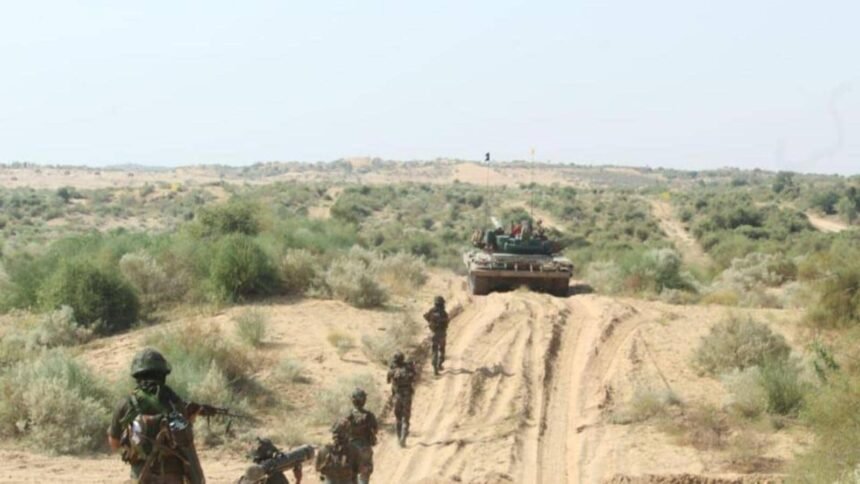The Indian Army’s Ambala-based Kharga Corps recently concluded a major training exercise in Punjab, showcasing their proficiency in the latest operational concepts. The exercise, which spanned from May 11 to May 27, saw the participation of various units and formations. An official statement released on Tuesday highlighted the key aspects of the training, including the deployment of attack helicopters, operations deep across adversary’s obstacle systems, the use of drones as force multipliers, combat in obstacle-ridden terrain, sustained operations in enemy territory, and heliborne operations.
One of the primary objectives of the exercise was to familiarize the participating units with the deployment and utilization of attack helicopters to provide support to ground forces. The training emphasized the coordination between helicopter units and ground troops to optimize their combined combat effectiveness.
In addition, the exercise focused on conducting operations deep within the adversary’s obstacle systems. This involved developing tactics and strategies to overcome various obstacles, such as fortified positions and defensive structures, to ensure successful operations in enemy territory.
The use of high-tech drones as force multipliers was another significant aspect of the training. Participants learned how to leverage drone technology to gather intelligence, conduct reconnaissance, and provide real-time situational awareness to ground forces. Drones were integrated into the overall operational framework to enhance the effectiveness and efficiency of military operations.
The training exercise also emphasized the importance of combat in obstacle-ridden terrain. Units were trained to navigate and engage in warfare in challenging environments characterized by natural and man-made obstacles. This aspect of the exercise aimed to enhance the troops’ ability to adapt to various terrains and effectively overcome obstacles during combat operations.
Furthermore, the exercise focused on sustained operations deep inside enemy territory. The participating units were trained to operate for extended periods in hostile environments, maintaining their combat readiness and logistical support far from friendly bases. This capability is crucial in ensuring the Army’s ability to project power and sustain operations in distant areas.
Heliborne operations were also a significant component of the training exercise. Troops underwent rigorous training in air assault techniques, including rapid insertion and extraction of forces using helicopters. Heliborne operations enable quick and precise deployment of troops, enhancing the Army’s flexibility and agility in responding to evolving situations.
The exercise incorporated joint training with the Indian Air Force (IAF) to enhance coordination and interoperability between the two services. Special emphasis was placed on operations in enemy territory across the western borders. This joint training allowed the Army and the IAF to develop effective strategies for combined operations, leveraging the respective strengths of both services.
Additionally, the exercise included simulated battlefield air strikes conducted by the IAF. This aspect provided an opportunity to evaluate the coordination between ground forces and the IAF, ensuring seamless integration of air power in combat operations.
The fortnight-long training exercise conducted by the Kharga Corps in Punjab showcased the Army’s commitment to staying at the forefront of modern warfare. By incorporating the latest operational concepts and technologies, the exercise aimed to enhance the combat readiness and effectiveness of the participating units. The joint training with the IAF further emphasized the importance of coordination and synergy among different branches of the military. Such training exercises play a crucial role in maintaining the Army’s operational preparedness and its ability to safeguard national security.




